Submitted by South Sound GREEN
In the face of COVID-19 and recent stay at home order, parents and guardians may find themselves looking for activities that not only keep students engaged, but also provide information about local environmental science and concerns. In our South Sound GREEN Home Based Science Project series, we will introduce and demonstrate various hands-on and at-home activities for children of all ages to do either indoors or outside!
 This time, we’re getting ready for the upcoming Orca Recovery Day by learning about orcas and their camouflage!
This time, we’re getting ready for the upcoming Orca Recovery Day by learning about orcas and their camouflage!
Title: Orcas in Disguise
Grade Level: 3rd-5th
Materials
- A change of clothing to match your environment
Background
Orca Recovery Day, taking place on Saturday, October 17th, 2020, is “an intentional day of action to restore habitat, reduce stormwater pollution, and educate the public about things they can do every day to help one of the most iconic species of the Pacific Northwest,” the orca. Now in its third year, Conservation Districts all over Puget Sound have organized Orca Recovery Day events, and even this year, when social distancing is so important, there are a lot of ways to still participate. But before we get to how to participate, let’s talk about orcas!
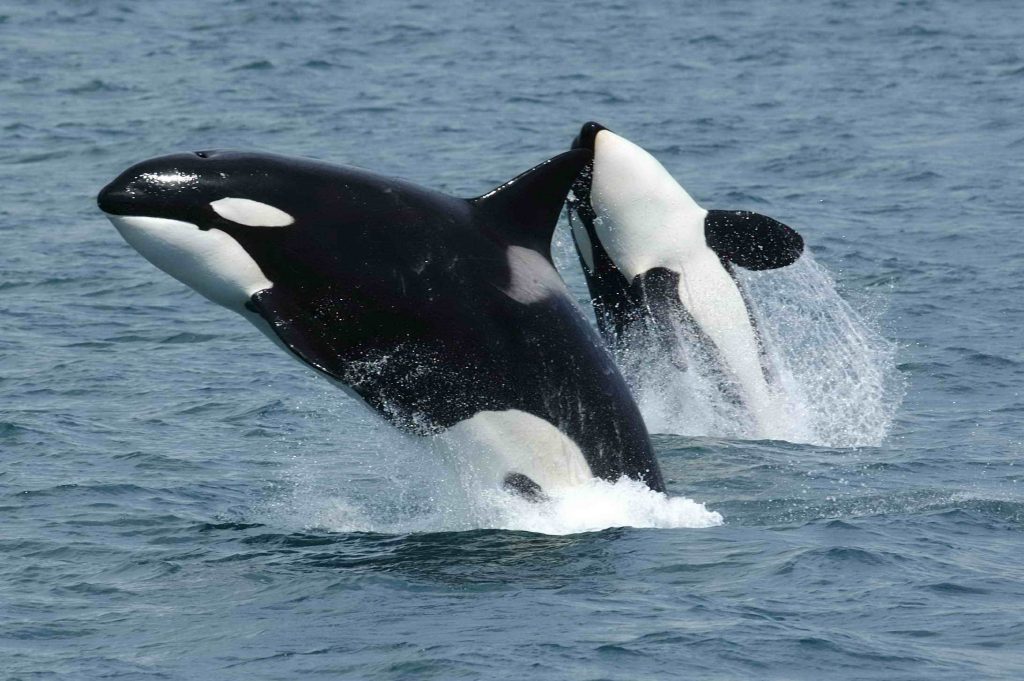
Orcas, also known as killer whales, are marine mammals that live all over the world and can be found in every ocean on Earth. Even though they’re considered whales, orcas are technically in the same family as oceanic dolphins. The “killer” part of their common name comes from their behavior and diet, which includes their ability to hunt and eat fish, other smaller marine mammals, and birds. In Puget Sound, we have two types of orcas – residents and transients. Resident orcas live only in the Salish Sea, including the waters of Puget Sound in Washington and the Strait of Georgia in Canada, travel in large groups, and only eat salmon. Transients only occasionally come into Puget Sound, travel in smaller groups, and eat mammals like seals.
 Differences in their food source also affect the behavior of the orcas. Residents can make a lot of noise while hunting fish, which aren’t able to hear as well, while transients need to be quieter to hunt seals. In both cases, however, orcas use camouflage to hunt. We have talked about camouflage in our Patterns in Nature article, but orcas use a very specific type of camouflage to stay hidden in the water. Orcas have countershading, which is a type of camouflage that features different coloration on the top of an animal’s body than the bottom. In orcas, this looks like a dark top half and a white bottom half. Have you ever wondered why orcas look this way?
Differences in their food source also affect the behavior of the orcas. Residents can make a lot of noise while hunting fish, which aren’t able to hear as well, while transients need to be quieter to hunt seals. In both cases, however, orcas use camouflage to hunt. We have talked about camouflage in our Patterns in Nature article, but orcas use a very specific type of camouflage to stay hidden in the water. Orcas have countershading, which is a type of camouflage that features different coloration on the top of an animal’s body than the bottom. In orcas, this looks like a dark top half and a white bottom half. Have you ever wondered why orcas look this way?
Imagine that you’re at a swimming pool or swimming out at the beach. As you look down, the water looks dark, especially if you’re in deep water. Now imagine that you swim down and look back up at the surface of the water. The sun makes the surface look bright! This is why orcas have countershading. When potential prey are looking down, the orcas blend in with the dark, deep water, and when potential prey are looking up, they blend in with the bright surface! Orcas share this feature with a lot of other species, including hawks, sharks, and penguins!
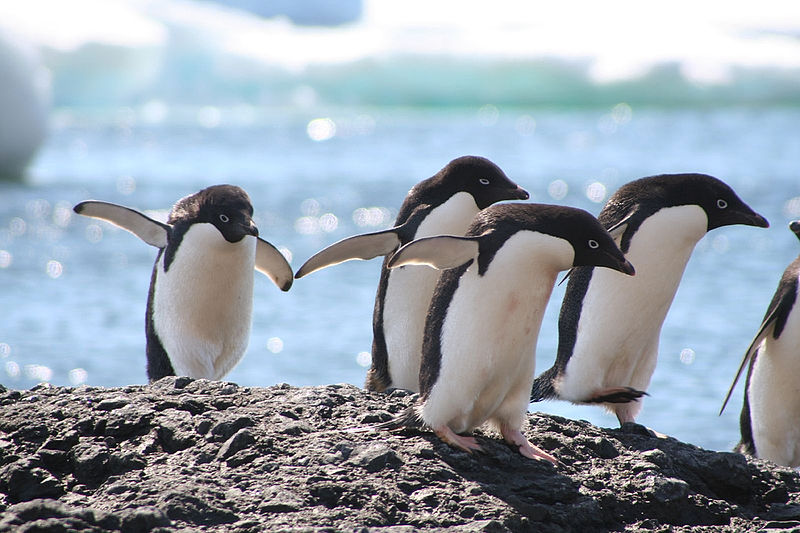
You may not want to go swimming in October, but you can still try out some camouflage yourself with an outdoor game! And while you’re outside, you can help out with Orca Recovery Day and take some of the actions listed below!
Procedure
- This activity takes place outside! It’s best done with multiple people and an area with a lot of natural features like trees, but you can still play in any area with things to hide behind. Please make sure to follow all social distancing guidelines if you’re playing with people outside of your home, but that shouldn’t be a problem with this activity!
- Start by observing your environment. The goal with this game is to blend in with your surroundings. Go back inside and put on any clothes that may help you camouflage in your environment!
- Once you’re wearing your “camouflage”, head back outside and assign one person to be the “prey”, or “salmon”. This person will stand in one spot the entire time, preferably in an open space. Everybody else will be the “predators”, or “orcas”.
- Have the prey close their eyes and count to 30. While that is happening, the orcas go out and hide in the surrounding environment. For this game, the rules are that the predators must stay as hidden as possible, but also must always be able to see the prey. If you’re a predator, try to hide behind something that matches your camouflage!
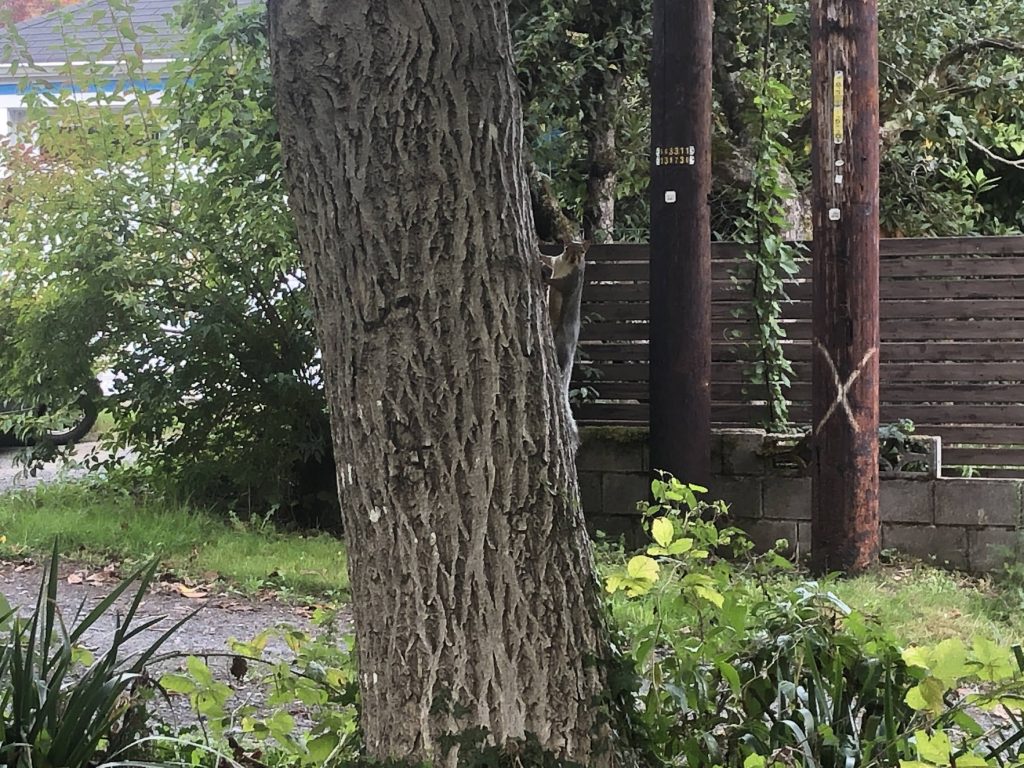
- After 30 seconds, the prey opens their eyes and tries to find the predators. Remember, the prey must stay exactly where they are and cannot move their feet! If the prey spots a predator, they call them out! The predator is then out for the rest of the game.
- Once the prey finds all the predators they can see, they close their eyes and count to ten. In that time, the predators need to leave their hiding spot and get closer to the prey! Find a new hiding spot, or if you’re close enough, run and tag the prey to win the game! (if you’re playing a socially distant game, the predators just need to run past the prey to win). If the prey finds all the predators, then the prey wins!
- Once you’re done playing, try out some of the actions below to help orca health from your own neighborhood or backyard!
Orca Recovery Day Information
Orca Recovery Day is an opportunity for you to work with your local Conservation District and other partner organizations to make a difference for our endangered Southern Resident orca whales. One of the biggest threats to our orcas is that their primary food source, salmon, are also endangered. 80% of the Southern Resident orca diet is salmon. Due to habitat loss, climate change, and increased pollution, local salmon populations are a fraction of what they used to be.
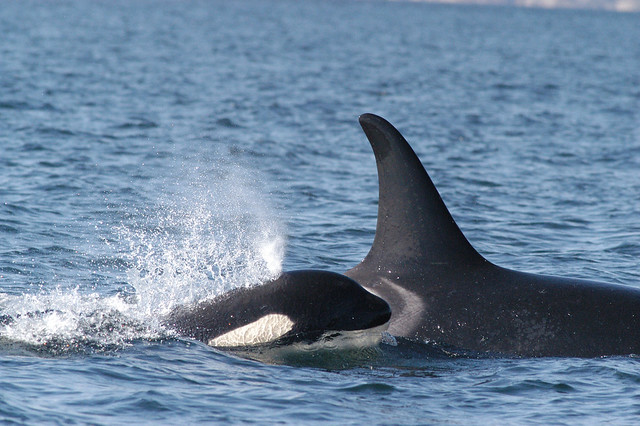
There is strength in numbers. With all of us working together, there’s still time to save our orcas and the vital salmon that feed them. You can be a part of the solution by restoring critical habitat, planting native shrubs and trees, collecting trash along roads and beaches, or anything that makes the environment better than how you found it. You can also bring awareness to by using the hashtag #OrcaRecoveryDay on social media.
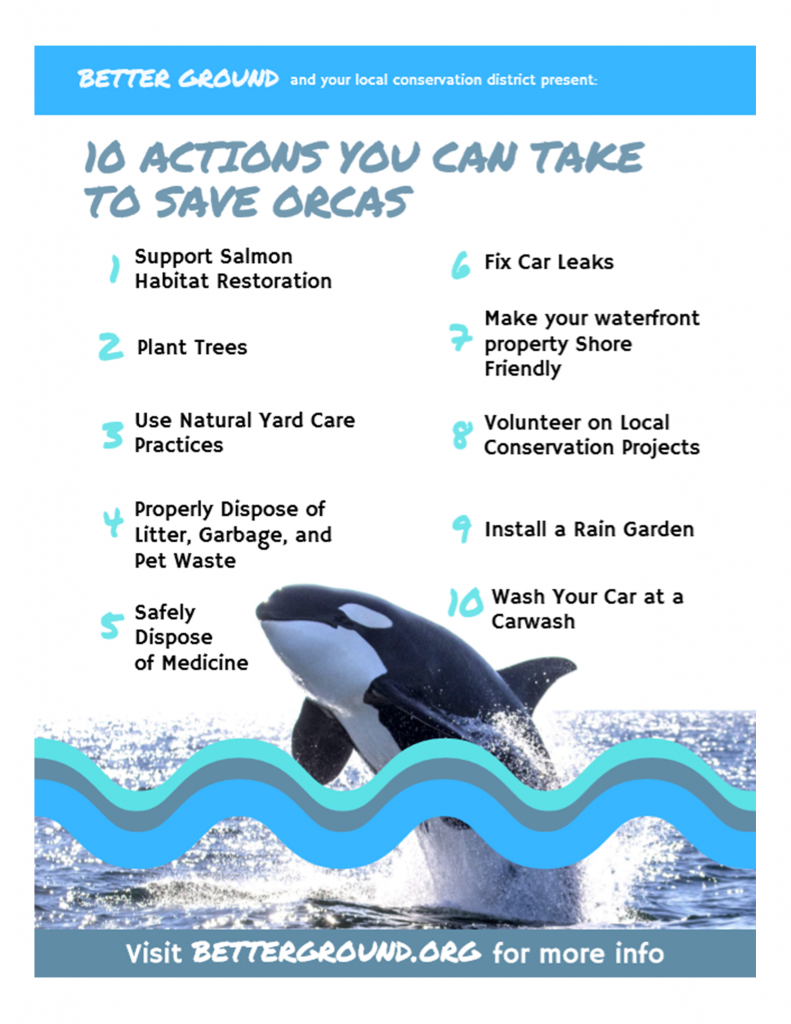
Vocabulary
- Camouflage: A type of pattern or coloration that makes an organism visually blend in with their surroundings.
- Countershading: A type of camouflage that features different coloration on the top of an animal’s body than the bottom.
- Orca: A species of toothed whale that lives in oceans all over the world. There are specific orcas that live in Puget Sound.
Keep Learning
- Want to learn more about your local Orca Recovery Day? Check out the Better Ground website! And if you’re in Thurston County, you can participate in our local Orca Recovery Day, hosted by Thurston Conservation District! You can sign up for different time slots to participate in person (safely!) at the West Bay Woods on Saturday, October 17th!
- Find more orca educational materials here!
- Share images of your camouflage games or orca projects with us on Instagram! Use the hashtag #GREENfromhome or find us at @southsoundgreen.
South Sound GREEN (Global Rivers Environmental Education Network) is a watershed education program in Thurston County that educates, empowers and connects thousands of local students in watershed studies annually. Through South Sound GREEN, participants engage in science and engineering practices related to water quality in South Sound. For more information, visit southsoundgreen.org.



















































